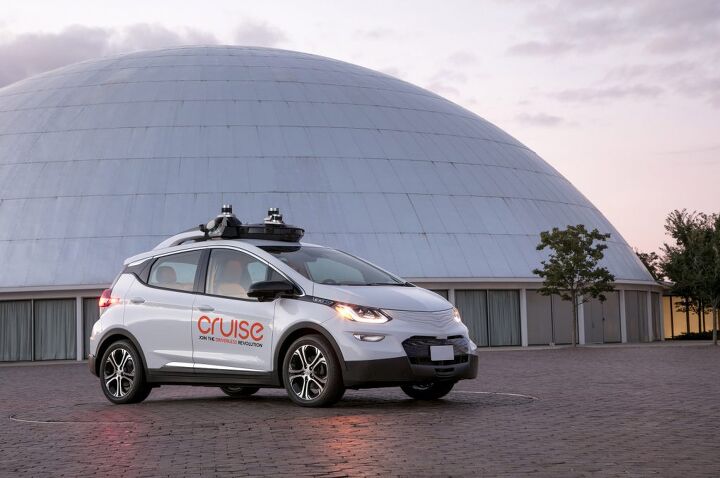Honda Invests Big in GM's Cruise Self-driving Arm

Honda likes what GM Cruise LLC is doing, and wants it to have some cash. On Wednesday, the Japanese automaker announced it would invest $2.75 billion in the GM-owned autonomous driving company, hoping to reap some of the reward of its purpose-built self-driving car.
While still under development, Cruise claims the vehicle — free of such things as a steering wheel or pedals — will arrive in 2019. Already, the company has a fleet of modified Chevrolet Bolts operating as testbeds for the technology. Once unveiled, GM Cruise plans to use the vehicle in a new ride-hailing service while also making it available to others, potentially funneling big bucks into its parents’ coffers. Honda’s, too.
Honda’s investment sees the automaker hand over $750 million up front, with the rest of the sum changing hands over the course of 12 years. The $2 billion will go towards development and mass production of the vehicle.
In a joint statement, the automakers said the investment will aid in the creation of a vehicle “that can serve a wide variety of use cases and be manufactured at high volume for global deployment.” For its contribution, Honda nets a 5.7 percent stake in GM Cruise LLC, which now carries a valuation of $14.6 billion.
The two automakers also announced they “will explore global opportunities for commercial deployment of the Cruise network.”
Alternative revenue streams are what Cruise is all about. The automaker purchased the Silicon Valley startup in 2016 for $581 million, tasking it with the development of GM’s own self-driving car. The unit purchased LIDAR maker Strobe a year later. Earlier in 2018, Cruise’s fortunes rose after a $2.25 billion investment from the Softbank Vision Fund — an investment that garnered the firm a 19.6 percent stake.
“The Honda partnership paves the way for massive scale by bringing a beautiful, efficient, and purpose-built vehicle to our network of shared autonomous vehicles,” said Cruise CEO Kyle Vogt in a statement.
As for the vehicle under development, progress is apparently well advanced. In a statement reported by Automotive News, GM president Dan Ammann, who oversees Cruise, said the car is the first purpose-built production vehicle that is “free from the constraints of having to think about vehicle design and having a driver at the wheel, and all the traditional approaches to that.”
Forgive this writer for feeling a little concerned about his driving future.
[Images: General Motors]

More by Steph Willems
Latest Car Reviews
Read moreLatest Product Reviews
Read moreRecent Comments
- VoGhost At some point, is TTAC going to explain how Tesla doesn't have MSRPs or dealers or dealer incentives? That there's no cash on the hood, subsidized leases or other games that legacy ICE automakers play with consumers? Or is it just easier and more profitable for TTAC to just continue to make an article of every price fluctuation?
- VoGhost If you want to really scare the TTAC commentariat, use a headline that combines China, EVs and TikTok. The horror!
- TheEndlessEnigma Looking pretty dirty and worn inside for only 11,000 miles.
- Add Lightness ...and I thought the Trump Towers were excessively pretentious.
- Daniel Tons of discounts out there on the eGMP's, just pick your style: Ionic 5/6, Kia EV6 and Genesis GV60. Personally, I got $20k off on a $60k MSRP GT-Line EV6 (only $7500 of that was a "rebate" from the state, the rest was Kia and dealer discounts). They are not only the same platform, but nearly identical mechanically other than slightly adjusted wheelbases. Find this one ugly? Look at Ionic 5 or EV6 instead, it's actually pretty cool how they came up with 4 distinct styles with basically the same car to fit many different tastes.


































Comments
Join the conversation
I will NEVER EVER ride in an autonomous vehicle that does not have redundant controls. NEVER EVER.
I'm with mjz. There is no upside to removing the physical controls. The way I see it there are only two plausible reasons for that design change, and they are pr shock value and cost savings. Neither, obviously, is sufficient justification to remove the most important failsafe a self driving car could have, the squishy grey computer that has been handling this kind of math with ease for decades. I won't get in one and I will have an angry response to seeing them on the street. It makes me think poorly of GM and Honda that they would participate in a program or business model set up this way.